
Emojis have gained popularity over the last several years, but using images as a part of language has been done for generations. Think of cave paintings or hieroglyphics: archaic civilizations often used images to mean something else. The emoji has also actually been around for some time– since 1999, in fact, when the Japanese mobile service provider, NTTDoCoMo coded the first 180 of them. Then, In 2011, Apple made the emoji a permanent part of their iOS keyboard.
Over the last two decades, the library of those little icons has exploded, with many of them even being added to Dictionary.com. It’s serious enough that there’s now a Unicode Consortium. That panel develops standards of meanings of Unicode text characters, as well as vets and approves new emojis. While emojis have gained some legitimacy as well as popularity over the years, some linguistic snobs may feel they have no place in a professional setting.
So what about for marketing?
The short answer: it depends. ?♀️
In a totally (cough) scientific poll I conducted on my social media, most people generally feel using emojis in a marketing setting can be situationally okay. However, there was also a pretty even spread of people thinking their use could be seen as cringey, childish, or unprofessional. Another group felt the opposite, thinking emojis are a great tool.
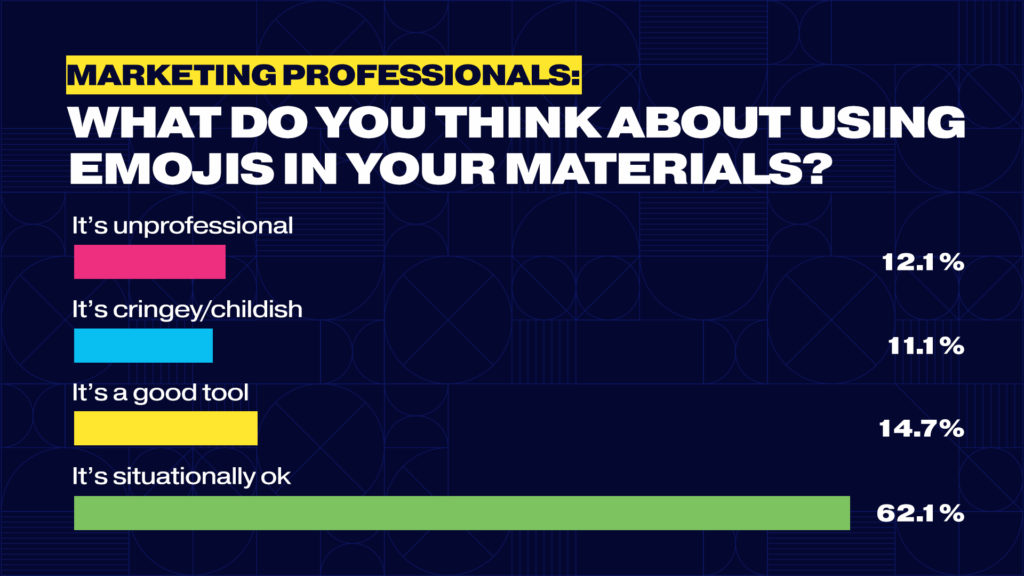
There’s really no right or wrong answer here; it comes down to a variety of factors including the voice and tone of your brand. Whether or not to use emojis is one choice among many that factor into the way that your brand and messaging will be perceived by your target audience. The choice to use them is akin to the choice to use contractions (do not vs. don’t). Using contractions or emojis tends to skew the voice younger and more laid-back.
Associate Creative Director, Tess Felton says, “I’m never a fan of saying you definitely can’t or can do certain things. There is no blanket recommendation for clients; it is always on a case-to-case basis and we can always help clients figure out if it will be appropriate for your brand voice.”
The cliché: a picture’s worth 1,000 words ?
When you think of marketing, you probably think of bright graphics and logos or special typography that draws people in. Using photos can evoke certain emotions in your audience and the same argument can be made about emojis as well.
While you’ve heard the cliché, there may be some actual credit to that phrase.
According to a study by WordStream, using emojis in a Tweet can increase engagement by at least 25 percent. Another study says that posts that use emoticons have higher like, comment, and share rates. More data suggests there’s an increase in email and push notification opens when emojis are included in subject lines.
Using emojis in your paid ads can also highly increase engagement. Adespresso tested this by creating two ads; everything about them was identical except that one ad featured an emoji in the headline. The ad with the emoji saw a 241% higher click-through rate than the non-emoji ad. ?
Your brand can jump on the popularity and influence of emojis on social media to make your message stand out, entertain your followers, and come across as more human and relatable if it’s right for you. Using emojis also can help you reach more people. Because more people are using them and they generally hold the same meanings across multiple languages, emojis can also help break language barriers.
Emojis should (unless your audience are a bunch of middle schoolers) be used judiciously ?⚖️?⚖️
Using emojis in your messaging can add an extra level of personality and relatability to your brand. By speaking people’s language with the emojis they use daily in text messaging and personal social posts, it humanizes you and boosts engagement.
This may be where some brands are worried as coming off cringey or out of touch, so they may avoid their use altogether. While there’s no right or wrong answer on whether you should use emojis for your brand, there are some best practices if you do decide to use them.
Use emojis to enhance, not detract from your message
Communication should always be straightforward. The easier your messages are to comprehend, the more people will listen.
It can be tempting to use a bunch of different emojis all at once that you think might relate to your message. But doing so may actually take away from what you’re trying to communicate. Senior Copywriter, Kellie Mazur says, “Emojis get a bad rap. But you can actually have playful fun that’s smart and clever. Though, I would recommend always using words along with them. If you lean too hard into emojis to give the bulk of the message, then they can weaken it.”
Take for instance, this tweet from the multinational investment bank, Goldman Sachs:
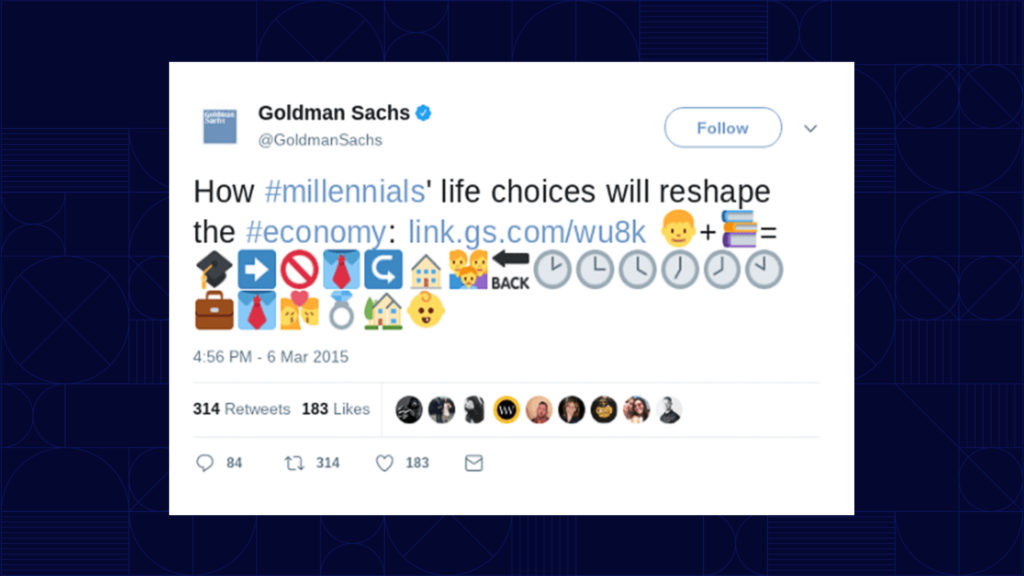
It’s hard to make out what the company is trying to say here. It kind of comes across like when your parents or grandparents first learned about “txt speak.” In this case, Goldman Sachs might have been better off using more words and fewer emojis.
Another example of an emoji party gone wrong ?:
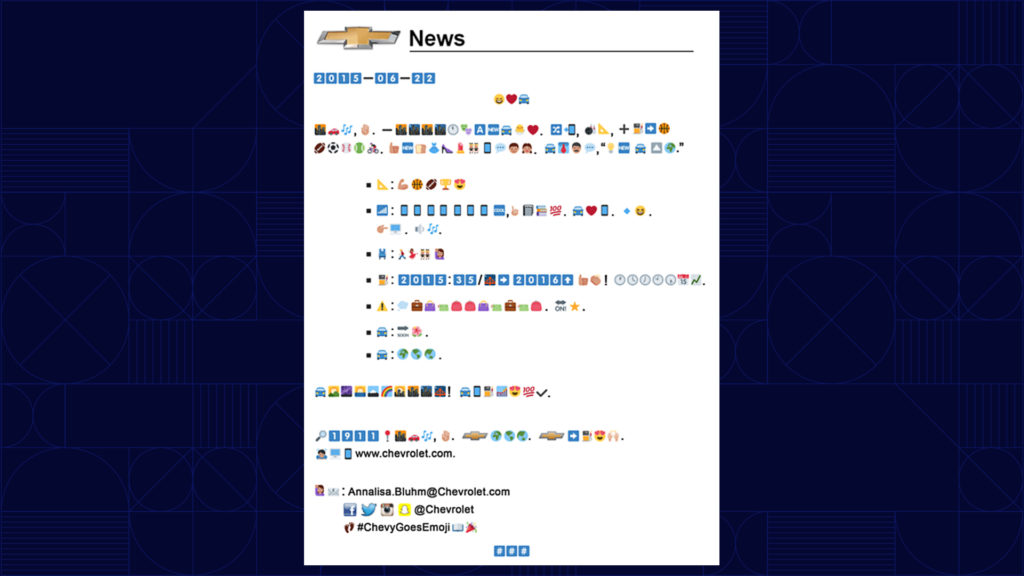
Chevrolet once released an entire press release in emojis only. Rather than making it easier for consumers to understand the brand’s message, the emojis made it impossible. This kind of communication in your campaign will feel forced, irritating, or just confusing.

Emojis can be used differently across different platforms
On social media, it’s important to keep posts short – sometimes because you have to, and sometimes because you don’t want your followers to scroll. While keeping it brief, you want to stand out and emojis are a great way to do that. However, you might have a slightly different strategy depending on which platform you are posting on.
Apps that have predominantly mobile use like Facebook and Instagram, where users have quick access to their emoji keyboard, lend themselves well to emoji use. Facebook even created its own emoji system, reactions, to promote engagement.
On platforms like Twitter, where you have a limited character count, using emojis can add extra context and emotion to your message when you can’t use extra words.
Kellie shares this insight, “On Facebook, I think people use the reaction buttons more than actual emojis. I find the most professional platform, like LinkedIn, embraces them the most because it’s text-driven. On LinkedIn, people use emojis to break up the text and get more eyeballs on their message.”
What emojis should you use? ??❤️
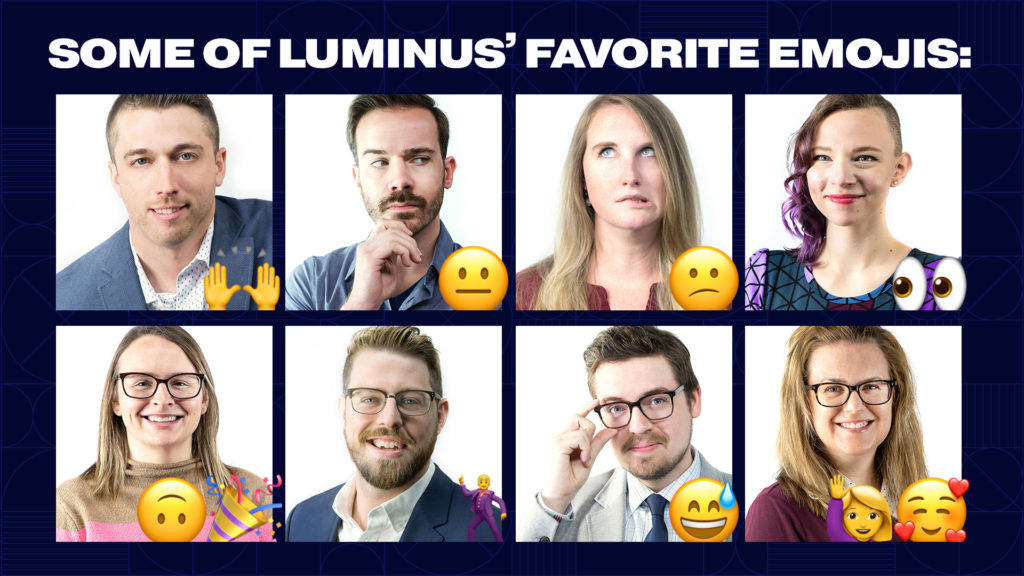
According to EmojiTracker, the ? emoji is most commonly used on Twitter and by Apple users. Its official name is “Face With Tears of Joy”, and it’s typically used in conjunction with humor or comedy posts.
Next: ❤️ the “Red Heart”. This emoji is used in a myriad of ways, most commonly to express affection and love, and it also comes in other shapes and colors. Red is the most popular, though.
The “Thumbs Up Sign” emoji is also a solid choice. The ?? is a universal sign for “OK”, and it’s now being used on Facebook, LinkedIn, iMessage, and Slack as a way to confirm receipt or acknowledge a message.
Be sure they mean what you think they mean ?
Ask a group what a ? or a ? means and you might get vastly different responses ?.
Emojis are essentially visual slang—if you don’t grasp the social context, you’ll come across as out of touch, or even inappropriate.

They might look different in various programs
Emojis also show up differently depending on your service provider. Apple, Android, and Google can all display emojis slightly differently. Additionally, emojis can be received differently across various email inboxes, causing some to land in the spam box.
? Something else to consider: when composing something like a tweet with emojis, screen readers might not read them well. In this case, test out the screen reader, and after hearing the emoji names read aloud, consider adding additional context for clarity.

Research the localized meaning of emojis.
Many emojis are pretty universal across regions and countries, but some emojis can have a different connotation depending on where you are. For instance, the “hugging face” emoji ? is interpreted as a funny shrug in Canada, but is considered a hug or the equivalent of “I support you!” in other countries.
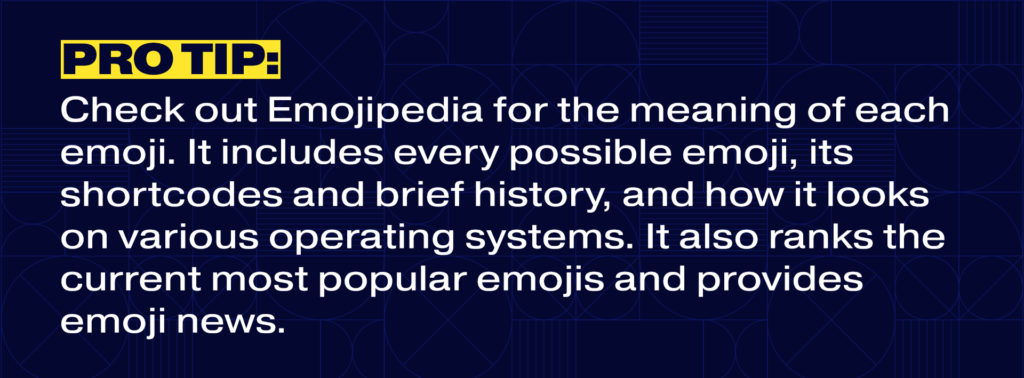
At the end of the day, do what’s right for your brand ?
One of the more interesting aspects of internet culture is the transformative ways people engage in creative language play, particularly when it comes to expressing emotions and reactions through emojis alone.
“Language evolves very quickly. Like, INSANELY fast. People don’t realize it because they’re living through it. With social media, it’s happening faster than ever.”
-Tess Felton, Associate Creative Director
A dictionary is still only a guide to language, not a definitive source of it. Lexicographers have to choose and record new words from somewhere and generally, they track how people actually and popularly use language. No one is really the boss of you when it comes to what makes a word a word or an emoji a part of language. Emojis are words and they shouldn’t be discounted as a new and unusual force in language simply because they don’t look like more traditional words.
“People might have an antiquated idea of ‘proper grammar’ based on what they learned in school. It’s not the constitution, it’s a set of guidelines that changes with the times. Language is always adapting and emojis are included in that. ??”
– Another great quote from Tess
The choice to use emojis (or even gifs, but that’s another blog for another day) is up to you. The Luminus team is here to help craft your message to look and sound the best that it can be. ?